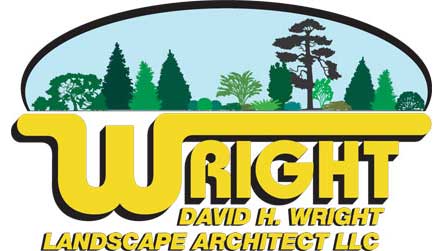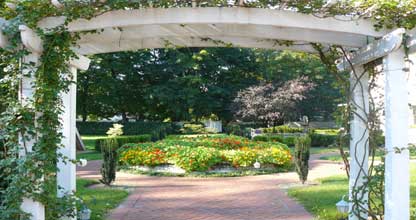The Design Process
....providing quality landscape design for Residential, Commercial, and Civic projects, both large and small.
Initial Conference:
- Meet on-site to determine client's objectives and expectations.
- Develop a design program.
- Within the Northern New Jersey area, there is never a fee for the first conference.
- A design quotation will follow along with design agreement.
|
Design Program:
- The design program outlines the client's needs and wishes.
- We encourage as much input as possible from the client. A good technique is to collect pictures from magazines or the internet. A "style" may very well evolve from this input. A critical step for a designer to "design" for a client.
|
Site Analysis:
- Site will be inventoried, analyzed, and measured.
- The "tangiables". The best views, worst views, grade problems, possible interferences with utilities, functional requirements of proposed improvements.
- The "intangiables". How does the site feel? How will the proposed improvements improve the feelings of the space?
|
Conceptual Design:
- Using the input from the Initial Conference and the Design Program along with information gleaned from the Site Analysis, a Conceptual Design is created.
- This is a preliminary design communication document done in a sketch form to allow changes to be made easily.
- The "spirit" of the design begins to evolve.
- "Hardscapes" (Patios, terraces, retaining walls, walks, decks) surfaces are allocated and proposed.
- Space Delineators (Arbors, Pergolas, Fences ,Screen plantings) add to the art.
- "Softscapes" (plantings, lawns, ground covers) are laid out in a preliminary fashion.
- Specific plants are not covered at this level. Instead plantings are analyzed according to textures and heights only. This gives us the freedom to analyze the spatial relationships of hardscapes and softscapes (an important step) without the encumbrances of a specific plant selection.
- This is an excellent time to begin or continue discussions on hardscape choices and plant selections.
- Once approved, the final design work begins.
|
Final Design - Planting Plans:
- Using all the input from the Design Program, Site Analysis, and Conceptual Design, the Final Design begins to take shape.
- Hardscape features are refined and finished first. Hardscape Features are for Artistic Expression and Space Planning purposes only. Additional study & design may be required to create construction plans for Hardscape Features and are not included in this step.
- Selection of plantings are next. Final plant material selections are labored over in each instance. The criteria for selection is analyzed on a case-by-case basis.
- Input from the client as to likes and dislikes is of primary concern.
- Site requirements from the Conceptual Design are the next layer of selection.
- Resistance of the plant materials to deer browsing has become a major driving force for selecting plants. More...Deer browsing problems have increased over the years. It just makes sense to try to steer selectionsof plantings toward the deer resistant list, but the list is limited in many ways and presents a real conumdrum. Couple this with the fact that we have had every plant on the deer resistant list eaten by deer somewhere in last 30 years and the extent of the problem becomes more evident. We have adopted many techniques to battle this problem. The answer is still a work in progress.
- "Order of Bloom" is the most fun to coordinate. Staggering the bloom throughout the year provides a garden with continued interest. Sections of the garden light up throughout the year and become old friends coming to visit.
- Evergreens in the garden. It is very important to include a presence of evergreen plantings in the garden. In some cases, the need for an evergreen screen is dictated by the Site Analysis. Other cases, evergreen plantings create the frame or the bones of the garden. Many times evergreens are an important part of a Winter Garden, which, simply put, is the face of the garden throughout the winter months (an important consideration).
- Plant hardiness and growth characteristics influences the plant selections greatly.
- Again, plant selections are a case-by-case process in every project.
|
Plant List -- A complete plant list is included on every Final Design. Typical plant list includes: Common Plant names, Botanical Plant names, size and root characteristics.
Plant Pictures -- Provided with each Final Design is a package of plant pictures. The 2 letter plant symbol from the plant list is included and is listed on each sheet. Clients can get a very good idea of the what the shrubs will look like at completion.


